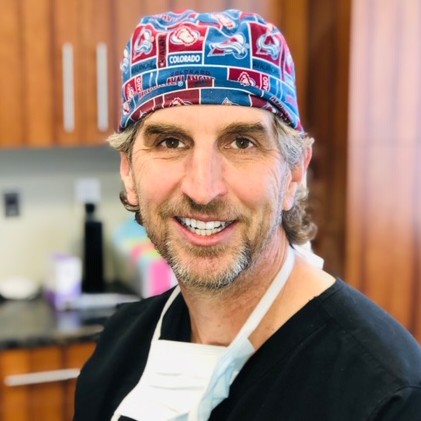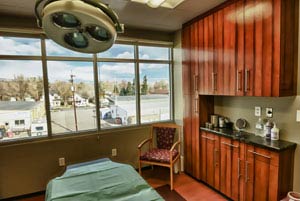Recovering from a tummy tuck is as much an emotional journey as it is a physical one. While many guides focus on the mechanics of healing, the reality is that the path to a smooth recovery begins long before the surgery itself. It involves a holistic approach that considers your mental preparedness, your support network, and how you mentally frame your healing process.
At Boulder Valley Plastic Surgery, we believe that by integrating mindfulness and personalized care into your recovery plan, you can achieve not just optimal physical results but also a sense of well-being and empowerment during your healing journey. This perspective, often overlooked in traditional post-op advice, can make a significant difference in your overall experience and satisfaction with the procedure.
Preparing for Your Recovery Before Surgery
A successful recovery from a tummy tuck starts well before you enter the operating room. Preparation is often the key factor that determines how smoothly your recovery will proceed, yet it’s a step that many patients overlook in their excitement and anxiety leading up to surgery. Beyond the basics of arranging for time off work and ensuring you have comfortable clothing, there are deeper layers of preparation that can significantly enhance your post-op experience.
Creating a Comfortable Recovery Space
Your recovery environment plays a crucial role in how well you heal. Consider this: your home isn’t just where you’ll physically recover; it’s where you’ll emotionally regroup and mentally process the transformation your body is undergoing. Preparing a space that soothes and supports you on all levels is essential. This might involve more than just setting up a recliner or buying extra pillows. Think about sensory elements like lighting, scents, and even the type of media you’ll consume. Subtle details like calming essential oils, or keeping a playlist of uplifting music or guided meditations, can make your space a sanctuary, contributing to a faster and more peaceful recovery.
Gathering Essential Post-Surgery Supplies
While many patients are aware of the need for supplies such as compression garments and ice packs, the importance of personalized comfort items is often underestimated. Have you considered preparing nutritious, easy-to-digest meals ahead of time? Or having a journal handy to track your progress and emotions? These seemingly minor details can make a profound difference in your recovery experience. A ready stock of soothing herbal teas, adaptive devices like grabbers or body pillows, and self-care items like hydrating skincare products can also contribute to a smoother, more comfortable recovery process.
The First 48 Hours: Crucial Steps for Initial Healing
The first 48 hours after your tummy tuck are perhaps the most critical period in your entire recovery journey. While you might be mentally prepared for discomfort and limited mobility, what often gets overlooked is the strategic approach you should take during this time to set the stage for optimal healing. Beyond following your surgeon’s basic guidelines, there are nuanced practices that can make a significant difference in your recovery process.
Managing Pain and Discomfort
Pain management in the first 48 hours isn’t just about taking prescribed medications on schedule; it’s about understanding your body’s response to surgery and being proactive in your approach. Many patients benefit from a combination of traditional pain relief and alternative therapies, such as guided breathing exercises or meditation, to help manage discomfort without over-reliance on medications. Additionally, positioning your body correctly while resting—often on your back with slightly elevated legs—can reduce strain on the abdomen and ease pain. It’s also important to stay ahead of the pain by taking your medications before discomfort peaks, rather than waiting until it becomes unbearable.
The Importance of Rest and Limited Movement
While rest is paramount, complete immobility can be detrimental. The first 48 hours require a delicate balance of sufficient rest and gentle movement to promote circulation and prevent complications like blood clots. Micro-movements, such as light ankle rotations or short, assisted walks to the bathroom, are often enough to keep your blood flowing without putting strain on your healing body. Having a loved one assist you with these small activities not only aids in physical recovery but also provides emotional support, which is crucial during this vulnerable period. Moreover, understanding the emotional toll that this phase can take, and having strategies in place to manage it, is equally important. Simple activities like practicing mindfulness, listening to soothing music, or even having short, positive conversations with your support system can help you stay mentally resilient during these crucial early hours.
Caring for Your Incisions and Preventing Infections
Caring for your incisions after a tummy tuck is a critical aspect of your recovery that demands more than just following standard wound care protocols. The way you approach this part of your healing process can significantly influence not only the speed of your recovery but also the long-term appearance of your scars. While most patients are aware of the basics, such as keeping the area clean and dry, there are other, less commonly discussed practices that can optimize healing and reduce the risk of complications.
Proper Wound Care Techniques
The key to effective wound care lies in understanding the delicate balance between protecting your incisions and allowing them to heal naturally. Rather than simply relying on antiseptic solutions, consider the benefits of a more holistic approach that includes the use of gentle, non-irritating cleansers and moisture-retentive dressings. These dressings can create an optimal healing environment by maintaining a stable temperature and protecting the area from external contaminants. Additionally, using silicone-based products once the incisions have closed can help to minimize scar formation. These products are often recommended by surgeons but are underutilized by patients due to lack of awareness.
Recognizing Signs of Infection Early
Preventing infection is not just about keeping the area clean; it’s about being vigilant and recognizing early signs that something may be amiss. Often, subtle changes in the skin around your incision—such as increased warmth, tenderness, or unusual discharge—can indicate the beginning of an infection. Patients are encouraged to monitor these changes closely and to not dismiss them as normal post-surgical symptoms. Additionally, boosting your immune system through proper nutrition, adequate sleep, and stress management can further reduce your risk of infection, giving your body the strength it needs to heal effectively.
Maintaining a Healthy Diet and Staying Hydrated
Your diet and hydration levels are often overlooked aspects of post-operative care, yet they play a pivotal role in your recovery. What you consume in the days and weeks following your tummy tuck can either accelerate your healing or slow it down. While it’s common knowledge that a balanced diet is beneficial, few patients understand the specific nutrients and hydration strategies that can optimize their recovery.
A well-rounded post-surgery diet should focus on promoting tissue repair, reducing inflammation, and maintaining energy levels. Below are some less commonly discussed dietary and hydration tips to support your recovery:
- Increase Protein Intake: Protein is essential for tissue repair. Incorporate lean sources such as chicken, fish, and plant-based options like lentils and quinoa to help rebuild damaged tissues and reduce recovery time.
- Include Anti-inflammatory Foods: Foods rich in omega-3 fatty acids, such as flaxseeds, walnuts, and fatty fish like salmon, can help reduce post-surgical inflammation, which is crucial for minimizing swelling and discomfort.
- Boost Your Vitamin C: Vitamin C is vital for collagen production, which helps your incisions heal faster and minimizes scar formation. Include citrus fruits, strawberries, and bell peppers in your diet.
- Hydration with Electrolytes: Beyond just drinking water, consider electrolyte-rich fluids, such as coconut water or homemade electrolyte drinks. These can help maintain your body’s fluid balance, which is particularly important when your mobility is limited post-surgery.
- Avoid Processed Foods: Processed foods often contain high levels of sodium and sugars, which can exacerbate swelling and inflammation. Opt for whole, nutrient-dense foods to aid in your body’s natural healing process.
By carefully selecting what you eat and drink during your recovery, you not only support your body’s healing mechanisms but also enhance your overall well-being, helping you to recover more quickly and comfortably.
Gradually Resuming Physical Activity
Resuming physical activity after a tummy tuck is a process that requires patience, mindfulness, and a deep understanding of your body’s cues. While it’s natural to want to return to your regular routine, rushing this process can lead to complications and setbacks in your recovery. What’s often not discussed is the importance of tuning into your body’s subtle signals during this time.
In the initial weeks, focus on gentle activities like deep breathing exercises and light stretching to maintain circulation without straining your healing tissues. As you progress, short walks can help prevent stiffness and improve your mood, but it’s crucial to listen to your body—if you feel discomfort or fatigue, it’s a sign to slow down.
Around the six-week mark, you might be cleared to reintroduce more structured exercise, but avoid high-impact activities that could stress your abdominal muscles. Instead, start with low-impact exercises like swimming or cycling, which allow you to stay active without putting undue pressure on your healing body. Always prioritize form and controlled movements over intensity, as your goal should be to rebuild strength gradually and safely.
Remember, each person’s recovery timeline is unique. By approaching your return to physical activity with care and awareness, you can support your body’s healing process and reduce the risk of complications, leading to a more successful and enduring outcome.
Emotional and Mental Well-being During Recovery
The emotional and mental aspects of recovery after a tummy tuck are often overshadowed by the focus on physical healing, yet they play a crucial role in the overall success of the procedure. Recovery can be a rollercoaster of emotions—ranging from relief and joy to anxiety and frustration. This emotional journey is normal, but it requires conscious management to ensure it doesn’t negatively impact your healing process.
One unique approach to supporting your emotional well-being during recovery is through mindfulness and meditation practices. By dedicating just a few minutes each day to mindfulness, you can reduce stress, improve your mood, and maintain a positive outlook. Visualization techniques can also be powerful, helping you to mentally project the final outcome of your surgery, which can motivate you to stay patient and follow through with your recovery plan.
Additionally, surrounding yourself with a strong support system—whether it’s family, friends, or a professional counselor—can provide the emotional backing you need. Open communication with your loved ones about your feelings can alleviate emotional burdens, making your recovery feel less isolating. Remember, your mental health is as important as your physical health during this time, and nurturing both will contribute to a smoother, more holistic recovery experience.
Long-term Care and Follow-up Appointments
Long-term care after a tummy tuck is crucial for ensuring lasting results and minimizing complications, yet it’s often underestimated. Beyond the initial recovery phase, your body continues to heal and adapt, which means your care regimen should evolve too. Scar management, for instance, is a long-term process that benefits from consistent care. Using silicone sheets or gels, massaging the scars, and protecting the area from sun exposure can significantly improve the appearance of scars over time.
Follow-up appointments are not just routine check-ins; they are essential touchpoints for your surgeon to monitor your progress, catch any issues early, and adjust your care plan as needed. During these visits, your surgeon can provide personalized advice on activities, skincare, and any other concerns you may have, ensuring that your recovery stays on track. These appointments also offer you the opportunity to discuss any emotional or physical challenges you’re facing, allowing for a more comprehensive approach to your recovery.
By committing to long-term care and regularly attending follow-up appointments, you’re investing in the enduring success of your tummy tuck, ensuring that the results are not only beautiful but also healthy and sustainable.
Conclusion
Recovering from a tummy tuck is a multifaceted journey that requires attention to both your physical and emotional well-being. By following the tips outlined in this guide, you can ensure a smoother, more effective recovery, ultimately achieving the results you desire. At Boulder Valley Plastic Surgery, we are dedicated to supporting you through every step of this process. If you have any questions or are ready to take the next step in your cosmetic journey, visit us or call us at (303) 449-6666. Your path to a confident, rejuvenated self starts here.





